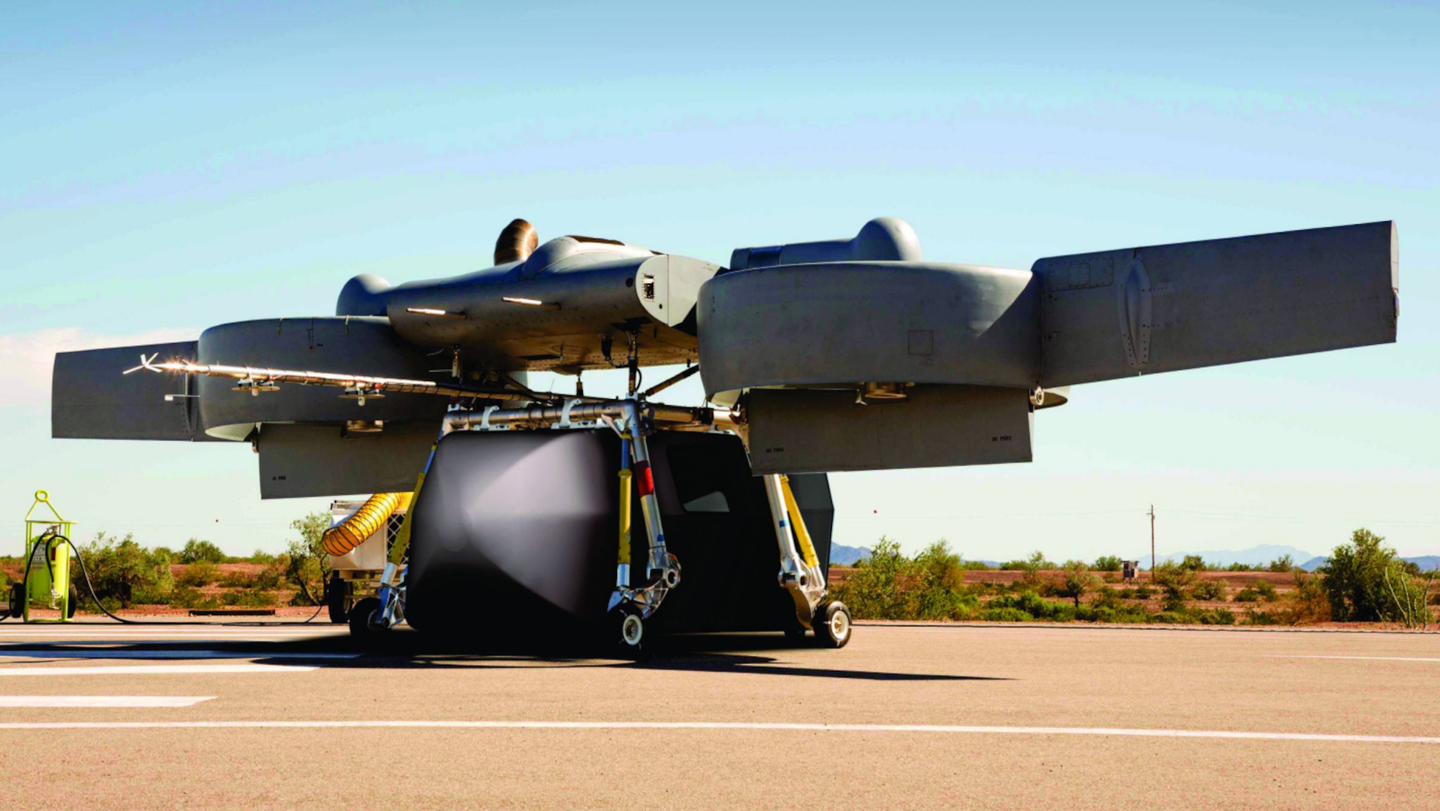Piasecki Earns $37M Air Force Contract to Develop ARES VTOL
The manufacturer is developing what it claims will be the first zero-emissions, hydrogen-powered compound helicopter on the market.

Piasecki’s ARES, a vertical takeoff and landing uncrewed aerial system, is designed for a range of military use cases. [Courtesy: Piasecki Aircraft]
A few years ago, uncrewed aerial systems (UAS) developer Piasecki Aircraft struck out when its contract with the Defense Advanced Research Projects Agency (DARPA) was canceled due to delays and high costs. On Tuesday, though, the company had a reversal of fortune.
Piasecki announced it was awarded a multiyear, $37 million contract with AFWERX, the innovation arm of the U.S. Air Force, through the division’s Strategic Funding Increase (STRATFI) program. The agreement will allow the Pennsylvania-based firm to test and demonstrate its Aerial Reconfigurable Embedded System (ARES)—the same UAS project that was snubbed by DARPA.
In addition, the contract calls for Piasecki to demonstrate hydrogen fuel cell propulsion technology for vertical takeoff and landing (VTOL) and other aviation applications, which it developed in collaboration with ZeroAvia. The company says its PA-890 eVTOL will be the first zero-emission, hydrogen-powered compound helicopter to market.
ARES was initially developed in partnership with Lockheed Martin’s Skunk Works, the manufacturer’s developmental aircraft unit, under DARPA. Piasecki took over after DARPA decided it was time to move on.
The system was designed with flexibility at the forefront. It can be flown crewed or uncrewed and is built to provide command, control, communications, computer, and intelligence (C4I), intelligence, surveillance, and reconnaissance (ISR), and combat and logistics support to “small distributed forces,” Piasecki says.
That’s a mouthful. But essentially, the company believes ARES can be a Swiss Army knife for the military. The UAS’ small landing footprint enables docking with ships or touchdowns in complex terrain, and its payload modules can be reconfigured for a variety of different missions. The latter feature can reduce the cost and logistics footprint of operations, Piasecki says.
With the Air Force’s backing, the company is now working with Honeywell to integrate a triplex fly-by-wire system on ARES, with the goal of beginning flight testing this year.
“This new funding will allow us to demonstrate ARES’ unique tilt-duct configuration, which enables seamless transition between hover and fixed-wing forward flight—a technological leap that would address critical aerial challenges faced by the U.S. military,” said John Piasecki, CEO of Piasecki Aircraft.
Simultaneously, Piasecki Aircraft will continue working with partner ZeroAvia to install the latter’s High Temperature Proton Exchange Membrane (HTPEM) hydrogen fuel cell technology on the PA-890 and other VTOL aircraft. The slowed-rotor winged eVTOL helicopter design is expected to be the first compound helicopter that runs on hydrogen and produces zero emissions.
“Higher temperature fuel cells are a critical technology to delivering improvements in specific power and unlocking truly clean propulsion for larger fixed-wing aircraft, but they will also enable rotorcraft and VTOL applications,” said Val Miftakhov, founder and CEO of ZeroAvia.
Piasecki Aircraft says the PA-890 is designed for emergency medical services, on-demand logistics, personnel air transport, and other commercial use cases. In addition to producing zero emissions, the eVTOL will fly farther than all-electric rotorcraft and quieter than fossil fuel turbine helicopters—all while cutting direct operating costs in half compared to the latter, the company says.
“Demonstration of the PA-890 would be a world first for electric aviation and would usher in a new era of clean vertical flight,” said John Piasecki. “While R&D work on these projects began several years ago, this new funding will rapidly expand our ability to deliver these radically new vehicles to customers and partners across the military and commercial sectors.”
In May, Piasecki Aircraft acquired a manufacturing facility in Coatesville, Pennsylvania, formerly home to the Lockheed Martin Sikorsky Heliplex. It intends to convert the 219,000-square-foot site—which houses engineering, flight test and delivery, and assembly, paint, and finishing centers—into an advanced research, development and testing hub for VTOL and UAS aircraft. The company expects the facility to attract about 400 workers by 2028.
Like this story? We think you'll also like the Future of FLYING newsletter sent every Thursday afternoon. Sign up now.

Sign-up for newsletters & special offers!
Get the latest FLYING stories & special offers delivered directly to your inbox






